Anytime you see a check engine light on your dashboard, you lose concentration. But that’s not really what you should do; panicking isn’t the solution. At least panic and do something to contain the situation. Warning lights are there, especially for newer vehicles, to notify you about your car engine or emission control system condition.
Nowadays, warning signs like check engine ones accompany defects that affect your vehicle’s performance while driving. Before you tackle any problem, it’s advisable to determine the root cause of the issue. Now, determining the causes of check engine light issues needs some skills. This article provides you with helpful information about the potential causes of the check engine light problem.
Reasons for check engine light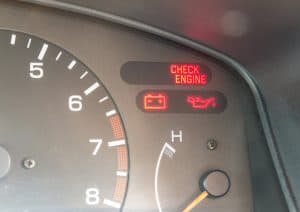
Check engine light may have different meanings, making a driver panic. Once you know the warning sign’s meaning, you are in an excellent position to work on it. Below is some of the common reason for check engine light:
1. Issues with catalytic converter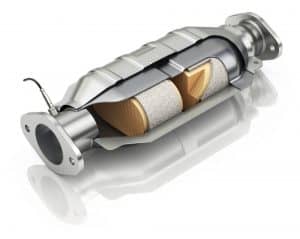
This converter remains essential in modern days for environmental conservation. The mechanisms incredibly convert harmful carbon monoxide into carbon dioxide. Driving with a vehicle that has a failed catalytic converter system may land you on the wrong side with the authorized police department.
In developed countries, cars undergo a particular chamber to be checked for emissions level. If the converter is failed, your vehicle will not pass the test, and your license or number plate may be pulled off. The vehicle will only return on the road once you have cleared with your transport department.
More so, sometimes, a clogged or failed catalytic converter may lower your car’s fuel economy, causing the vehicle to operate at hotter temperatures.
2. Gas cap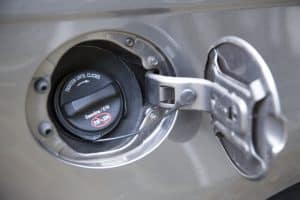
Driving with missing damage or a loose gas cap may trigger the light to illuminate. This happens when the car’s onboard computer detects that there’s pressure loss in the fuel tank. A tightened gas cap ensures the pressure is appropriately contained inside the tank, preventing it from evaporation. Besides, such a gas cap prevents the pressure from being emitted into the air.
However, if the check engine light appears after immediately filling the gas tank, check to be sure the gas cap is tightly held in its place. Sometimes you may forget to return it to the right place after fueling. Therefore, returning it to the place may solve this problem. If the issue is persistent, then you should get your vehicle diagnosed with other problems.
3. Plug wires or spark plugs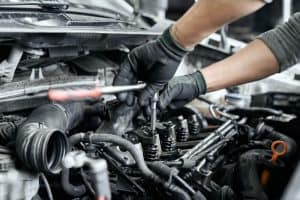
For your care to fire up its engine, it depends entirely on the nature of the spark plugs. The firing process occurs through the spark plug wires. Therefore, whenever either of these components is compromised, the car engine will start to behave abnormally.
Your car engine will start to show up some unusual symptoms triggering the check engine light to turn on. Once the engine isn’t okay, the overall performance of the vehicle is also affected. You will start to experience lower fuel and less power economy. Sometimes the car engine can misfire, accompanied by other serious problems.
It’s therefore advisable to take action as much as possible after noticing the issue. Or else, expect to pay more on repair and even sometimes replacements. Let the expert inspect the vehicle and replace the Plug wires or spark plugs if possible.
4. Oxygen Sensor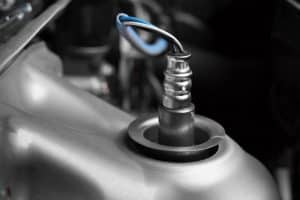
The oxygen sensor is another critical component that plays a vital role in the operation of your vehicle. The reason behind this statement is simply because the sensor monitors and controls the unburned oxygen coming out of the exhaust pipe. Once there’s a fault with this component, your car will start to consume more fuel than usual. Therefore, it accurately helps the vehicle to control fuel consumption.
A damaged sensor can significantly reduce fuel efficiency and sometimes damage your car’s catalytic converter and spark plugs.
5. Overheating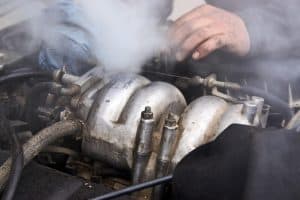
Overheating might be another reason for the check engine warning light. Sometimes the light might also illuminate some other issues, accompanied by severe signs like a high running temperature gauge. Observe the hood of the vehicle to see if there’s smoke.
You need to address the issue immediately because it sounds like a more serious one. You need to pull over and turn on the heater to release some heat from the car engine. However, you might attempt all these, and still, the vehicle remains unresponsive.
In such scenarios, you need to slow down, park the car on the roadside, and call for towing services. Continuous driving an overheating engine may cause more harm to other sensitive components of the vehicle.
It would help if you were careful not to openly and carelessly remove the cap; you may burn with the hot water or vapor from the radiate. So, if you are not sure, seek assistance from an experienced mechanic.
You might be interested to read also: Water or Coolant in My Radiator? Which is best for you?
6. Diagnostic malfunction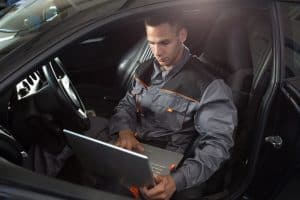
Sometimes you will see the check engine light to notify you that something might not be suitable with your vehicle’s internal diagnostic mechanism. This issue may make the system ‘look’ for ghost problems, portraying issues that are not there. Sometimes the loose wire systems might be creating the system’s false positive.
So, it would help if you got the issue checked and fixed in such cases, ensuring the car’s performance is enhanced. Doing so will positively enhance your vehicle’s operation. Besides, ensuring that the diagnostic system is in good working condition will promote consistent vehicle performance by the car onboard computer.
Once this issue is addressed, the computer will be on its toes, notifying you instantly whenever something is wrong. This might be the reason you see the check engine light on the dashboard.
7. Mass Airflow Sensor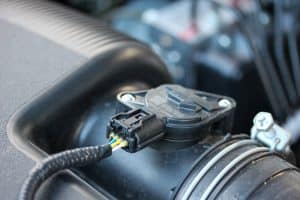
I thought you should know that the amount of air penetrating the car’s engine always determines the amount of fuel required for the vehicle to operate efficiently. The Mass Airflow Sensor plays a critical role when it comes to this sector. The sensor is always in charge of measuring and commanding your car’s computer on how much fuel is required.
Hence, it monitors and regulates the airflow within your vehicle’s engine. So when the sensor isn’t working correctly, the engine performance will be diminished and lower fuel economy.
Remember, delay in addressing this issue may also damage other parts like spark plugs and the oxygen sensor. Sometimes the catalytic converter might also get affected when the Mass Airflow sensor is not in good working condition.
8. Issues with the charging system
I am sure no one would wish to find himself in a jump-starting situation. Failure to have your car battery regularly checked can stop the car from starting typically. The wiring mechanic should also ensure that the vehicle’s charging system is functioning smoothly.
Some electrical parts of your car’s charging system or the alternator may hinder you from making regular starts. If these parts are not functioning correctly, you will see the check engine light on the dashboard.
Read also our another comprehensive article of: Ring Battery Charger Not Working:what Should you do?
9. Bad ignition coil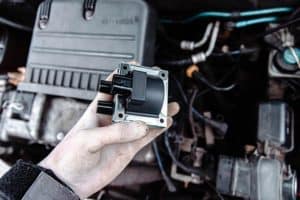
Faults with your car’s ignition might be another reason why you see the check engine light on the dashboard. This component helps convert the car’s voltage to the desired volts; when this part shorts or burns, the check engine light turns.
FAQs about check engine light:
- Is it advisable to drive with the check engine light on?
The check engine light on is terrifying once you see it. The check engine light implies that there’s a problem with your car’s emissions system. However, you can still drive with the issue, but it depends on how it’s critical. You need first to observe the car’s behavior; if it’s not strange, drive safely to the garage or home.
- Who should make a free-check engine light diagnosis?
It is always advisable to let your vehicle be checked only by experts. Their experience helps them to determine the issue with the vehicle quickly. some of the places you can take your vehicle for free-check engine light diagnosed are; local auto parts store, trusted family mechanic, AutoZone, Napa Auto Parts, Pep Boys Auto Parts, and Advance Auto Parts
- What are some of the common causes for a check engine light?
Briefly, your car computer may trigger the check engine light due to: loose or missing gas cap, bad oxygen sensor, failing or fouled spark plugs. Other reasons are bad catalytic converter, and bad Mass airflow sensor is bad
Once the above issues are addressed timely, the check engine light will disappear. If you believe in yourself, go on and inspect the issue; if not, seek an expert’s help.
Final words
Hopefully, this article helps you understand some of the reasons that might be leading to the check engine light on your dashboard. What you need to do is to act timely to prevent the problem from worsening. Delaying to address the issue might extend the damages to other parts of your car’s engine.
However, sometimes you might be seeing false security sense due to diagnostic malfunction. So, if you see the check engine light, the above catastrophes might be the reason. Have the vehicle diagnosed for potential problems on time and save some money for repair.
In this video you can see what are the most common reasons why the check engine lights up on or starts flashing.
